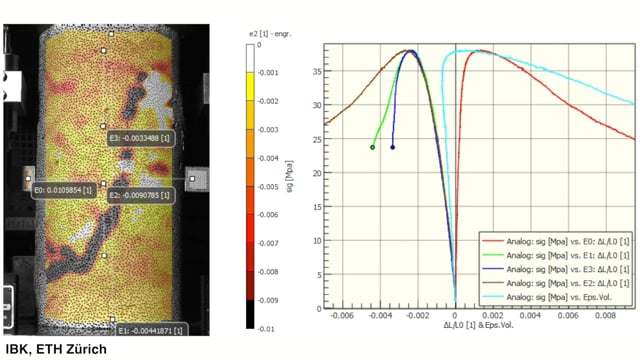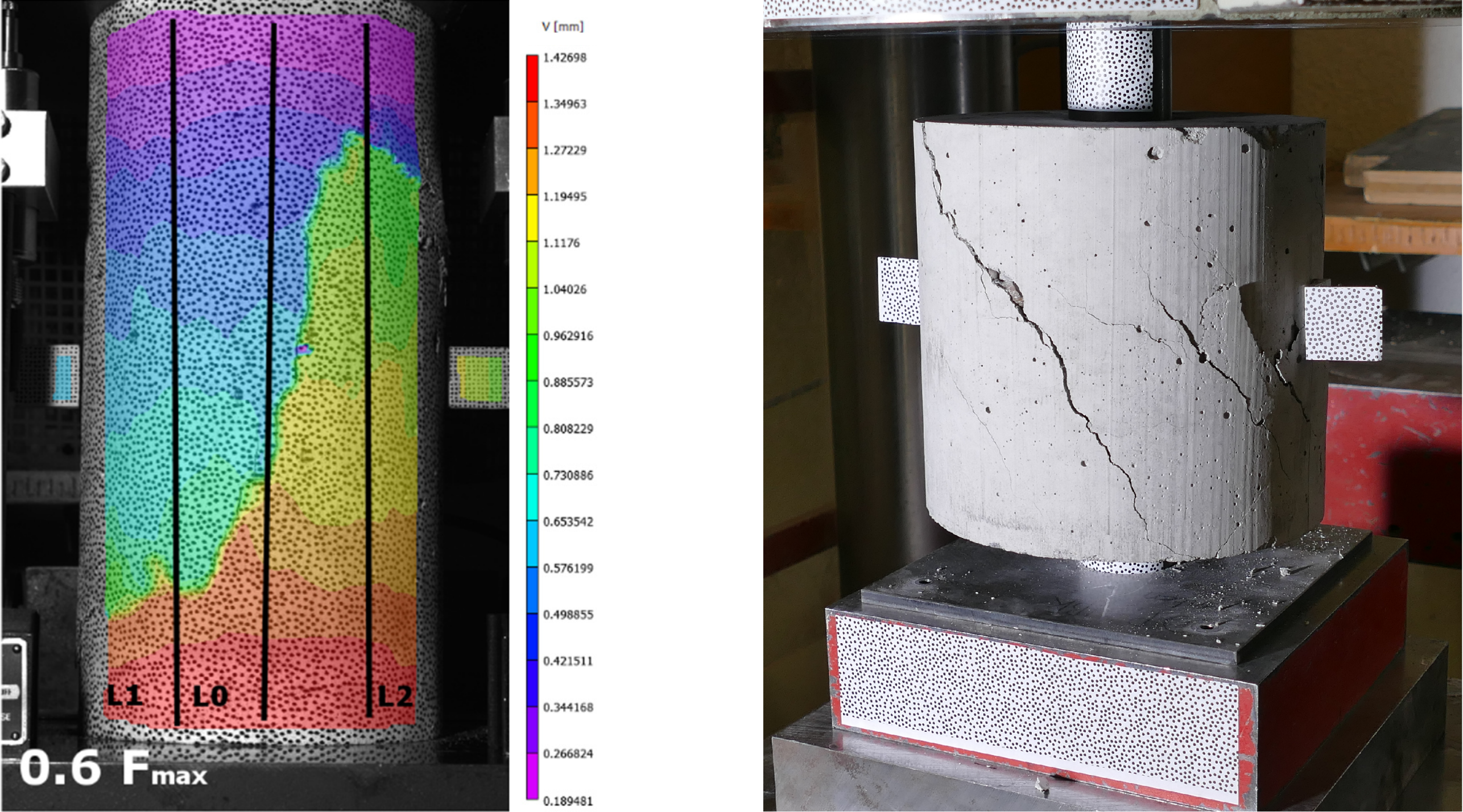Compression Tests on Concrete cylinders using DIC-based measurement systems
(original title: Druckversuche an Betonprüfkörpern mit DIC-Messungen)
Author: Flurin Reist
Language: German
Abstract
During this Master’s thesis tests on concrete specimens using DIC (Digital Image Correlation) measurements are carried out. Both the suitability of DIC measurements for concrete compression tests as well as the behaviour of concrete under great local compression in double-punch tests with reinforced specimens is investigated.
The main advantage of DIC is that it permits a contactless measurement of deformation and strain of the specimen’s surface. The state-of-the-art of other measurement systems used for compression tests is critically revised. The young’s modulus tests and cylindrical compression tests carried out show a good suitability and accuracy of the DIC system.
Moreover, the DIC system shows a good potential for analysing the post-peak behaviour of concrete under uniaxial compression. It allows to capture unloading and strain-localisation areas. The comparison of the test results with existing models is rather good. However, the acquired measurements indicate a difference concerning the localised deformation and its contribution to the total behaviour. DIC measurements are found to be useful for a better understanding of the compression softening behaviour of concrete and their application on other type of tests is worth consideration.
In the second part of the thesis, reinforced concrete cylinders are tested in double-punch tests to investigate the behaviour of concrete under great local compression. Several reinforcement contents are tested with the intent to achieve different failure mechanisms. A failure of the transverse reinforcement or a local compression failure of the concrete below the loaded area are expected depending on the reinforcement content. However, in all tests a failure of the loaded concrete is observed; this is due to a failure of the spiral anchorage and the consequent local loss of confinement. An additional local confinement helps to reach higher peak loads and confirms the failure mechanism. The test result reaffirm the beneficial effect of confinement, which allows reaching concrete stresses up to ten times the uniaxial compressive strength.


